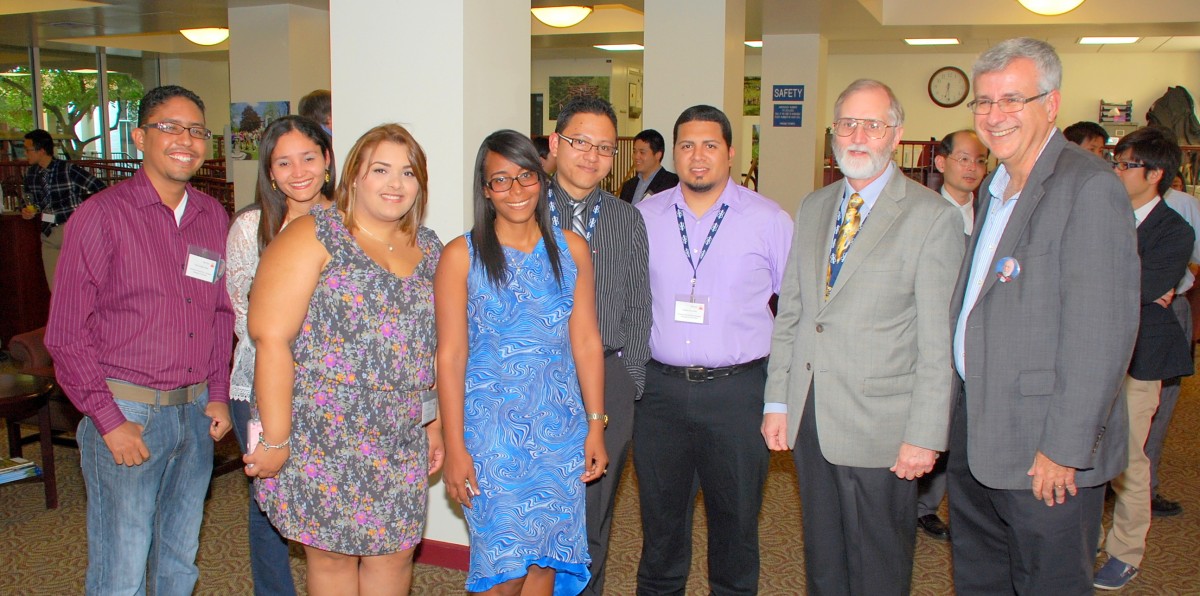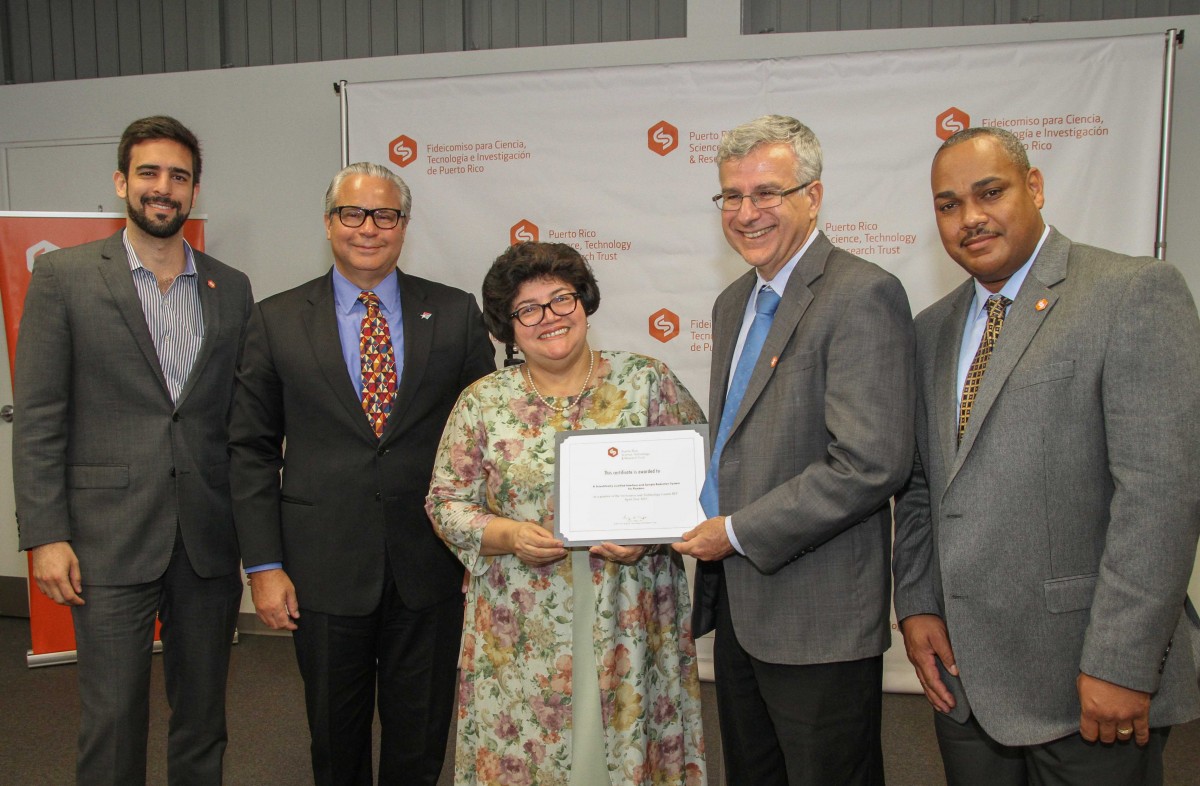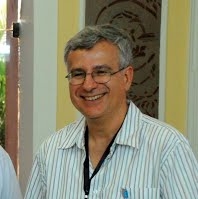Rodolfo Romañach: Improving production of pharmaceutical and food products through scientific research
Submitted by Lorraine Doralys Rodriguez-River... on
To produce drugs and foods in a safe and efficient manner is an important and complex task. Food and pharmaceutical companies are actively trying to improve their processes in order to prevent drugs that were not manufactured properly, and unsafe foods to reach the consumers. Scientists like Dr. Rodolfo Romañach use research and innovation to tackle these challenges.
Once the manufacturing process is completed the final product is sampled. This sample is subjected to further testing and analysis. This all happens before the product reaches consumers. The purpose of these tests is to ensure that the product complies with the quality standards approved by the Food and Drug Administration (FDA). If the tests show that a specific product does not comply with these standards the product is discarded. This represents thousands of dollars in time and money losses for pharmaceutical companies.
Scientists like Dr. Romañach develop methods to monitor the quality and composition of products throughout the manufacturing process, instead of just testing the final product. The advantage of doing this is that the manufacturing process can be adjusted or improved so that the product complies with quality requirements. In order to achieve this, Dr. Romañach uses sensors and instrumentation that evaluate the chemical composition of the drugs while they are being manufactured. Using this strategy, known as Process Analytical Technology (PAT), a pharmaceutical company could make real-time improvements to their product so that it can be manufactured properly. Dr. Romañach conducts applied research. His academic research group collaborates with pharmaceutical companies in Puerto Rico and abroad, such as Janssen Ortho, GSK, and Bristol-Myers Squibb, in order to improve their industrial processes.
The aforementioned is only one of many contributions made by Dr. Romañach. In addition to his work on improving drug manufacturing, this professor has also provided important contributions to the food industry. I was not until recently that Dr. Romañach’s research group, in collaboration with Chilean researchers, helped to improve edible films. These films are made up of a thin layer of edible polymers that when deposited on the surface of fruits, vegetables, and other foods delay their spoilage by keeping them fresh. This work was recently featured in Diálogo Digital, a magazine from the University of Puerto Rico’s newsletter.

Dr. Romañach in his laboratory with his students Bárbara Alvarado, Adriluz Sánchez y Génesis Correa. Photo courtesy of Dr. Romañach.
Dr. Romañach was born in Cárdenas, Cuba, but lived in Puerto Rico since he was 7 until he was 13. When he was a kid, his favorite school subjects were English, literature, and mathematics. His family moved to Louisiana where he completed his high school education. Subsequently, he was admitted to the Chemistry program at the University of New Orleans. It was during those years that he discovered how much he enjoyed chemistry. What he enjoyed the most was to visualize the structure of matter using purification and crystallization methods. For this reason, he decided to pursue a career in this field. He worked as an undergraduate research assistant under Dr. Charles O’Connor, who still serves as the director the Advanced Materials Research Institute (AMRI) in that same institution.
He was admitted to the graduate program at the University of Georgia, where he earned his Ph.D. in Chemistry in 1986. One of his most memorable mentors was his Ph.D. advisor, Dr. James A. de Haseth. Dr. Romañach remembers that his advisor always inspired students to look at problems in-depth and from several points of view. His high respect for industrial problems and challenges was evident in his courses and advice. His lectures were very interesting and he always emphasized the importance of scientific writing. But above all, Dr. Haseth set an excellent example for his students, an example on how to be good scientists.

Dr. Romañach with Dr. James de Haseth and his students at the International Diffuse Reflectance Conference in Chambersburg, PA. Photo courtesy of Dr. Romañach.
After Dr. Romañach obtained his Ph.D., he worked for almost 12 years in the pharmaceutical industry. He remembers that in order to collaborate with industrial pharmacists at Upjohn Manufacturing Company in Barceloneta, Puerto Rico, he had to learn new methods and approaches. This is one of the reasons why he became interested in pharmaceutical research. A little more than a decade after, in 1999, he was hired by the Department of Chemistry at the University of Puerto Rico, Mayagüez campus. He served as Graduate Coordinator for eight years, from 2003 to 2011. During that time, some of the achievements of the Department of Chemistry were: the approval of a Ph.D. program and an increment of the program’s enrolment to up to 62 students.
Dr. Romañach’s research projects have transcended continents. His research group has collaborated with scientists from Europe, North and South America. These collaborations have benefited on his more than 25 years of experience working with spectroscopy technologies. These technologies are used to analyze the chemical composition of different materials based on how they scatter light and electromagnetic radiation. Dr. Romañach is part of the team that leads the Engineering Research Center for Structured Organic Particulate Systems. This center promotes collaboration among professors from different institutions such as: Rutgers University, Purdue University, New Jersey Institute of Technology, and the University of Puerto Rico in Mayaguez. The National Science Foundation (NSF) and several industrial partners have assigned millions of dollars in funding to this center, which has the objective of transforming pharmaceutical processes in order to improve design and operation. More recently, Dr. Romañach was part of the first group of scientists awarded a research grant from the Puerto Rico Science, Technology and Research Trust (PRSTRT).

Dr. Romañach being awarded a grant from the Puerto Rico Science, Technology and Research Trust in April 2015. Photo credit: PRSTRT
In addition to the contributions on manufacturing processes, Dr. Romañach has contributed to academia by being an excellent educator. He has served as the research advisor of dozens of students and teaches several courses in the Department of Chemistry. He believes that teaching is not explaining every single detail to students. According to Dr. Romañach “Teaching is creating an environment where students can learn and become leaders”. He thinks it is imperative that college courses be restructured so that they may provide an active learning environment. His main advice for students interested in pursuing a scientific career is: “Always focus on learning. Enjoy learning, and keep your enthusiasm even when things don’t prosper as expected. The rejection of a proposal or paper is an opportunity to learn. You learn and then continue with more energy”.
Dr. Romañach is a role model. His abilities and strengths not only have promoted innovative collaborations between academy and industry, but they also have contributed to the development of a new generation of scientist in Puerto Rico and abroad.
If you would like to learn more about Dr. Romañach visit his profile.








